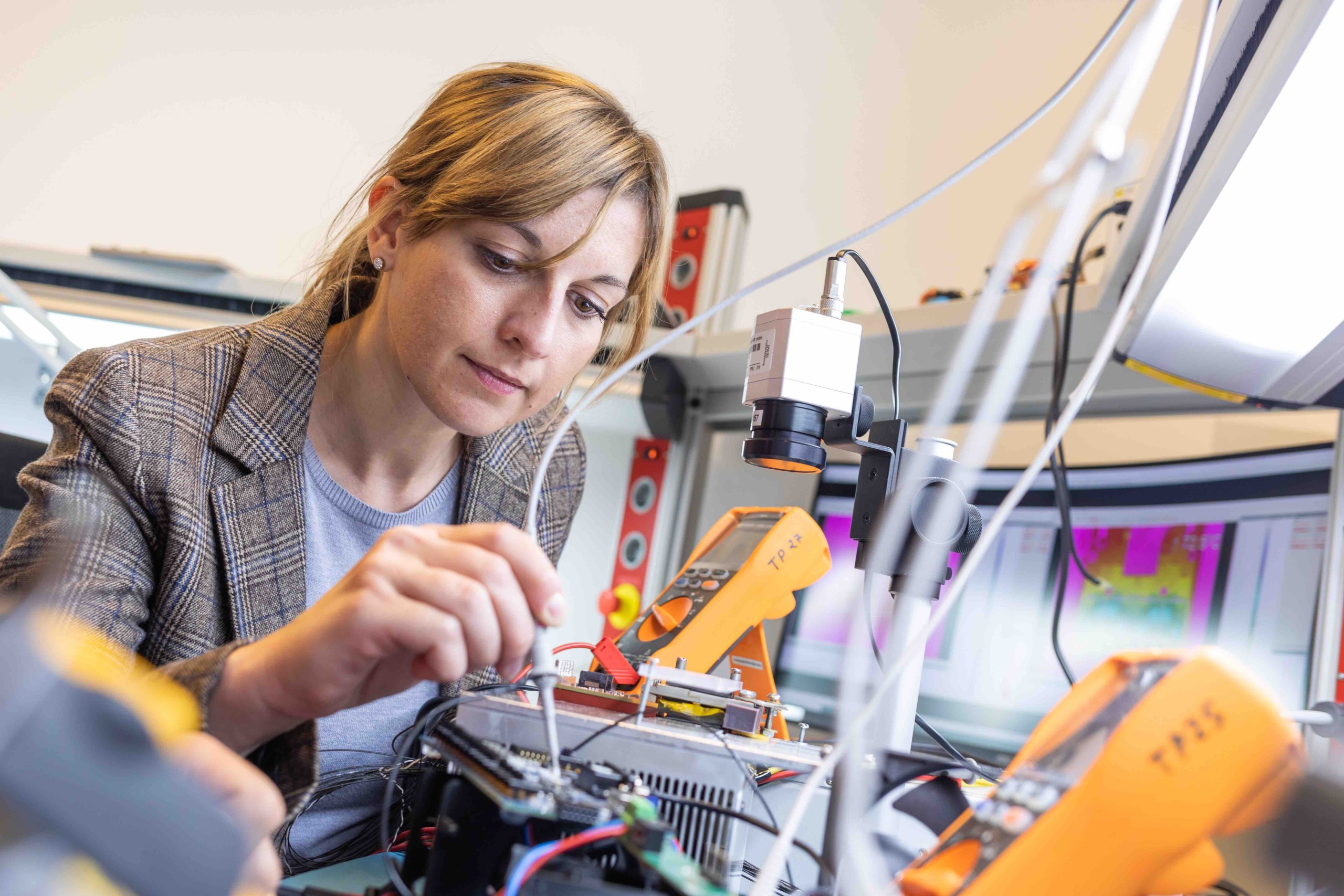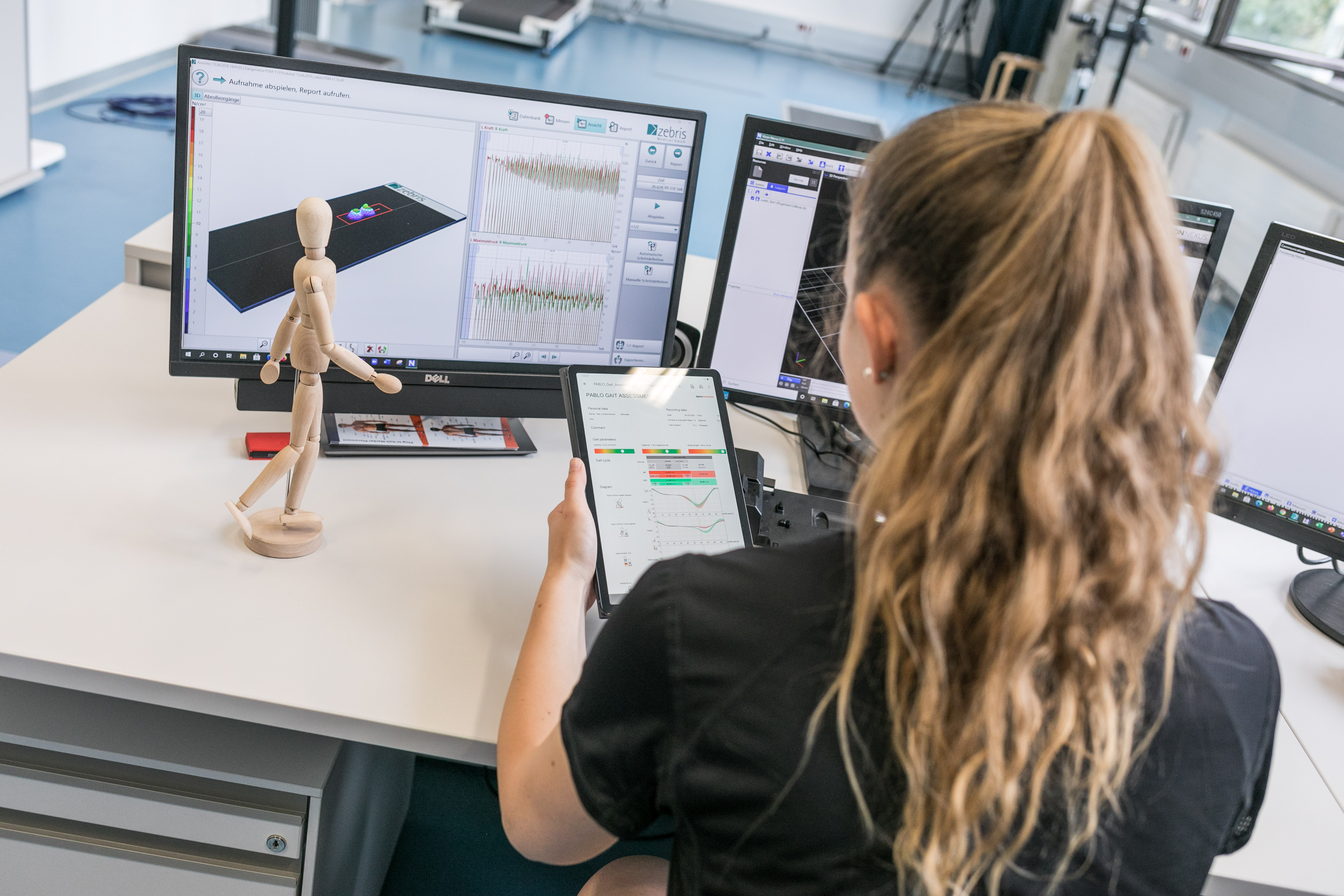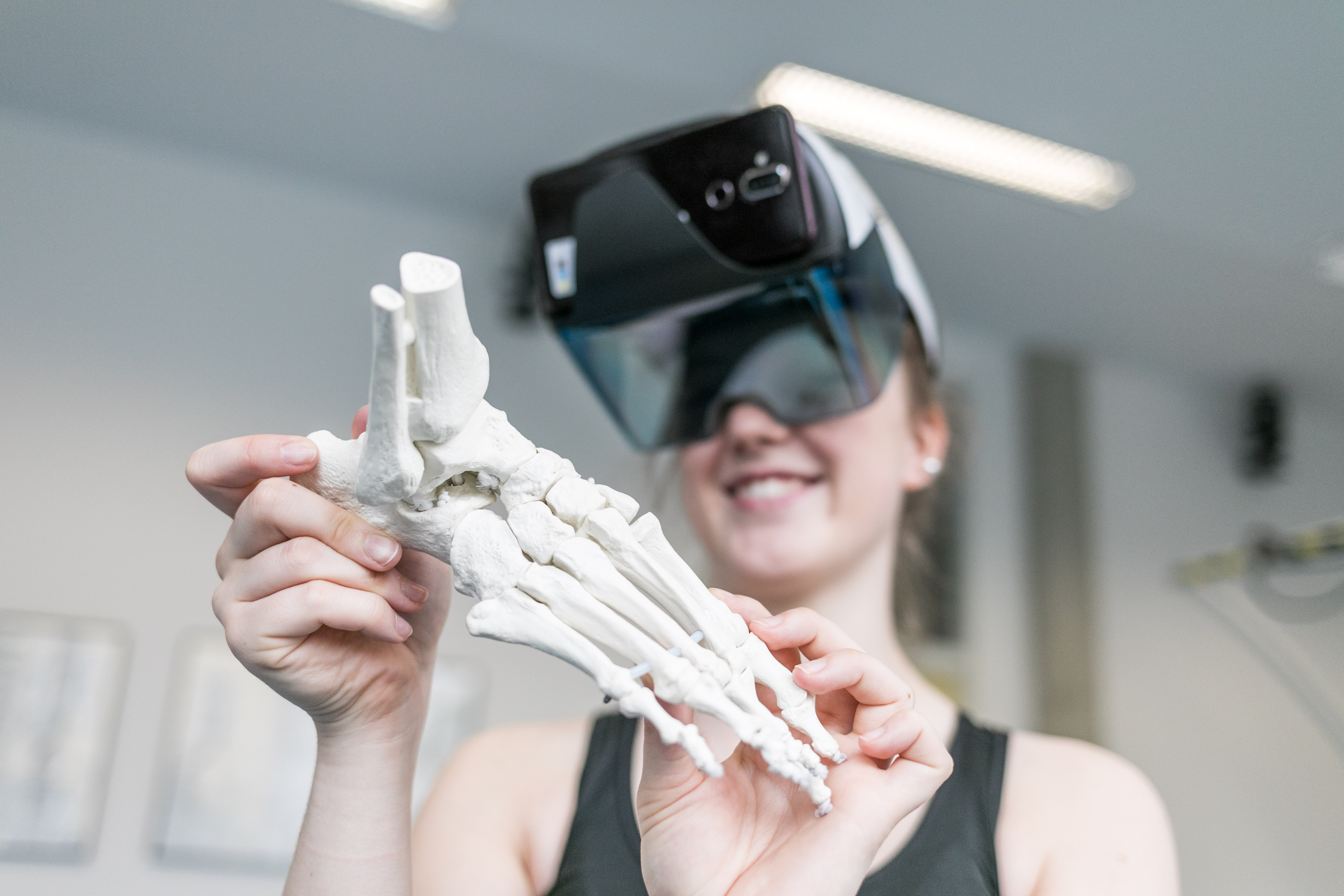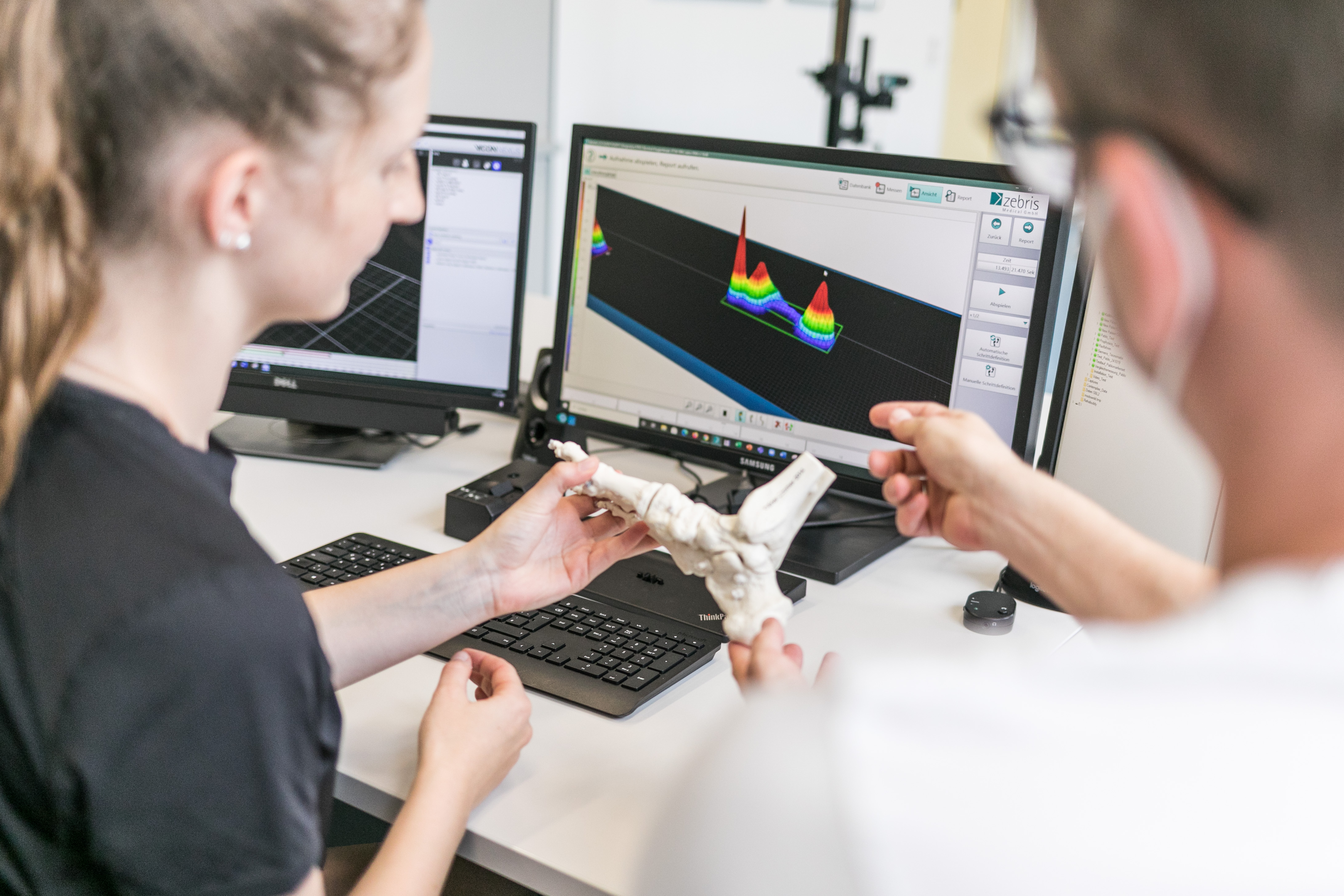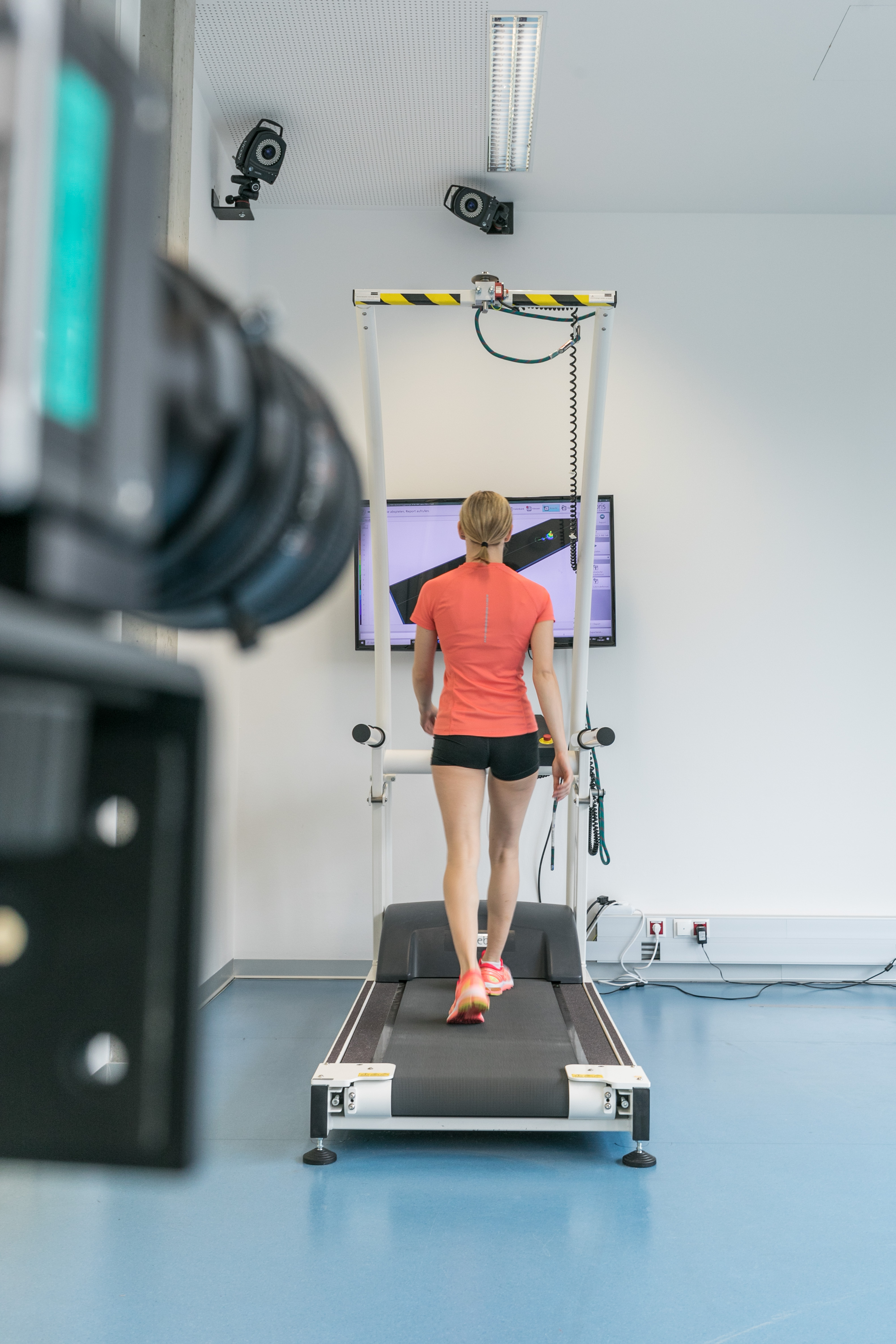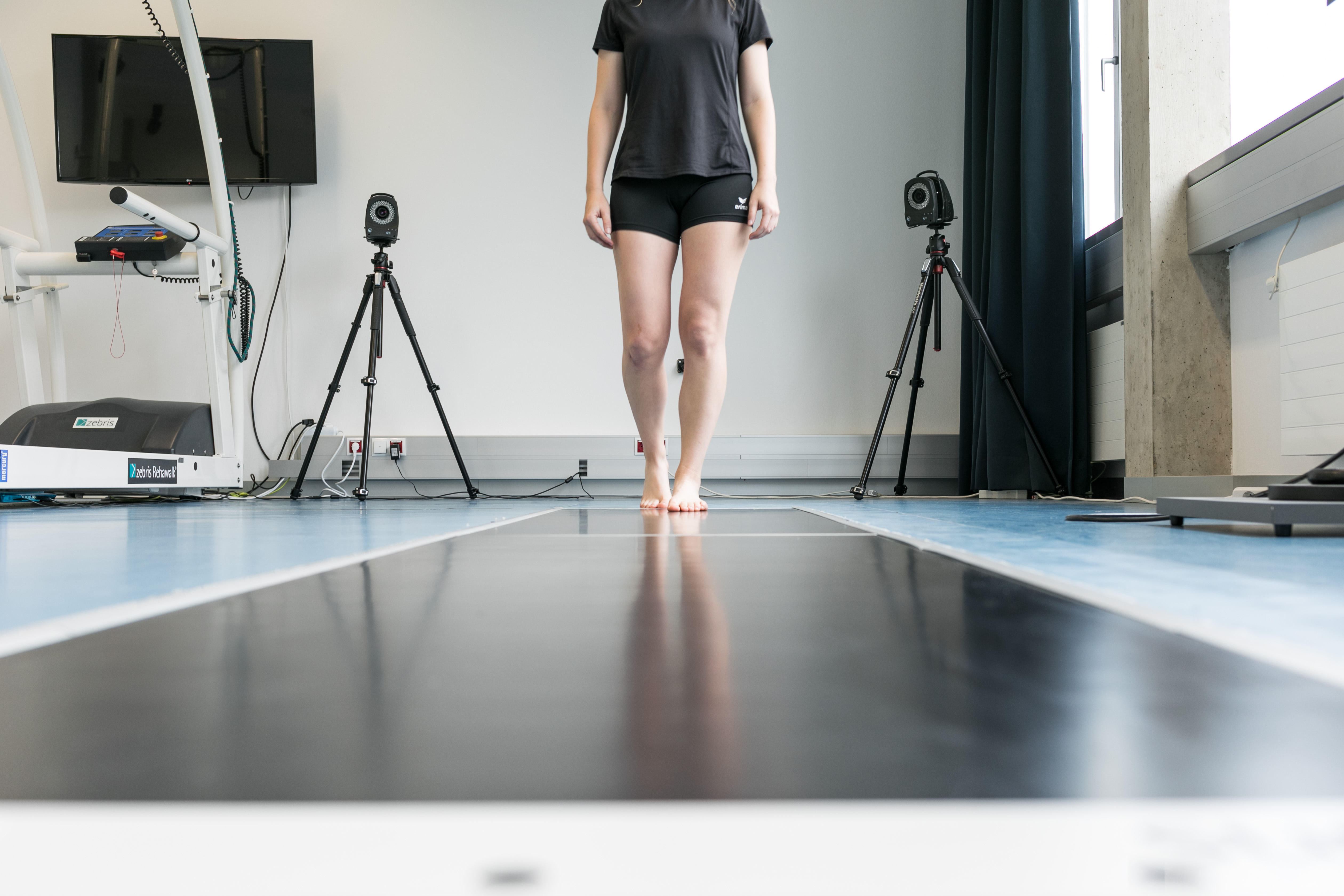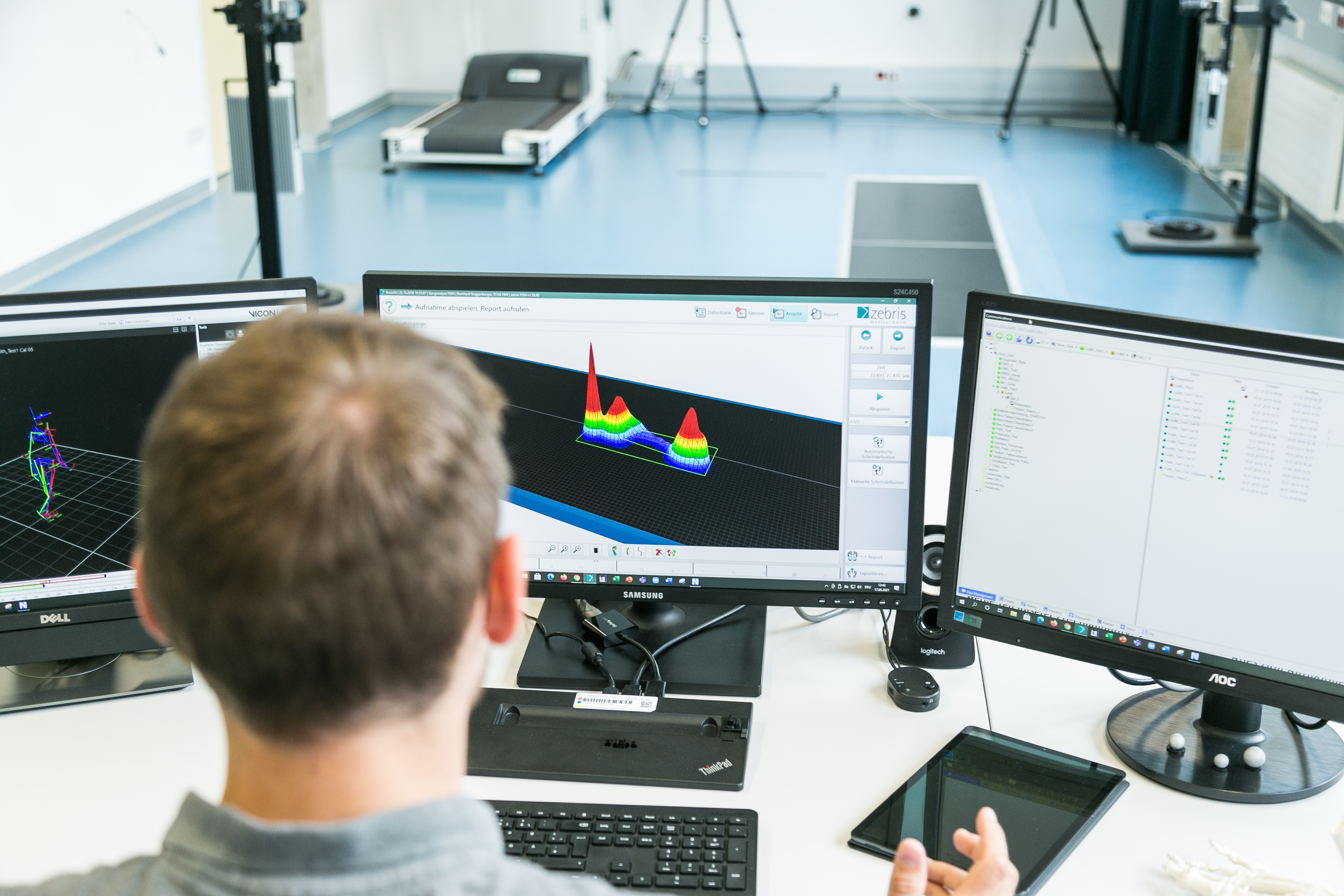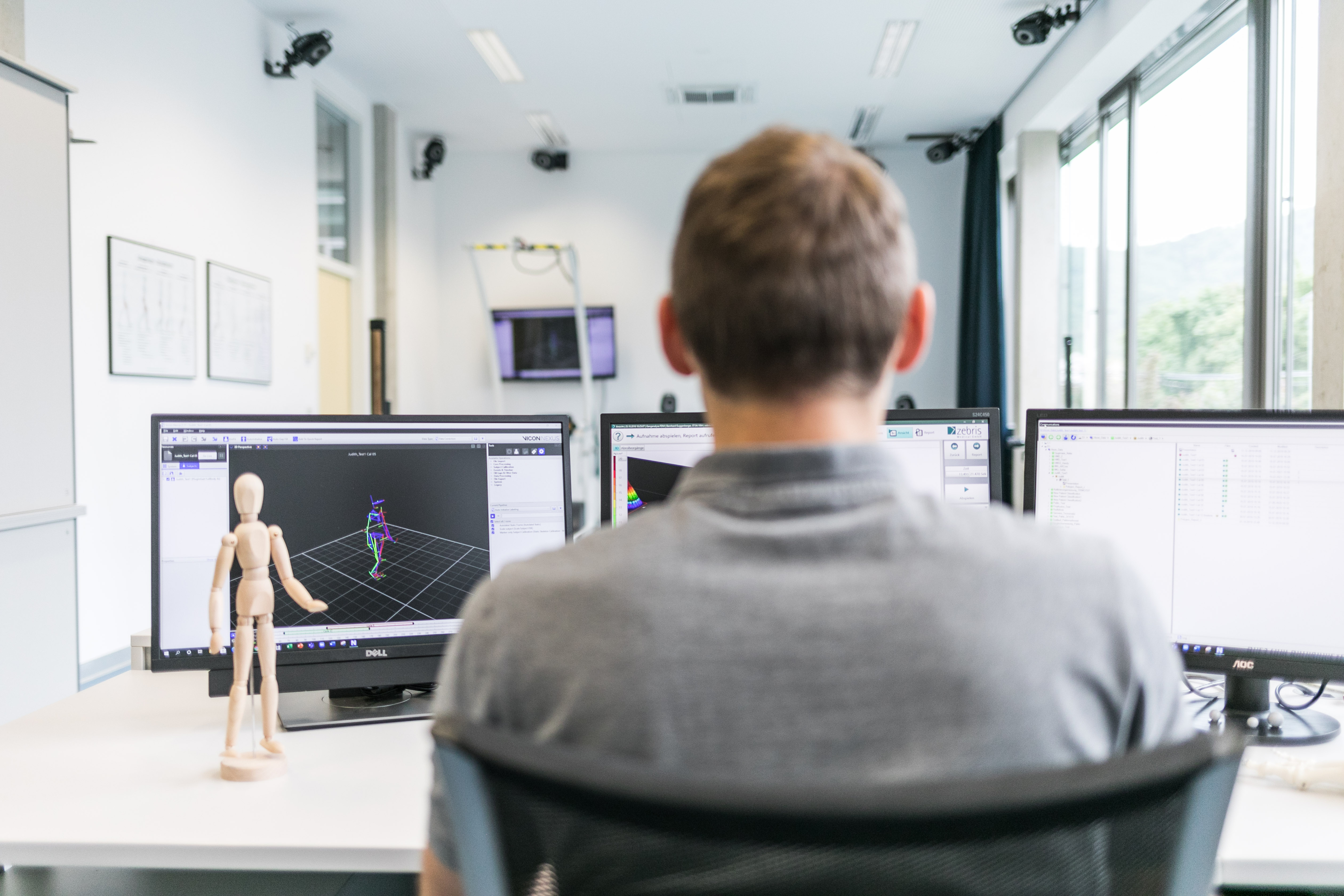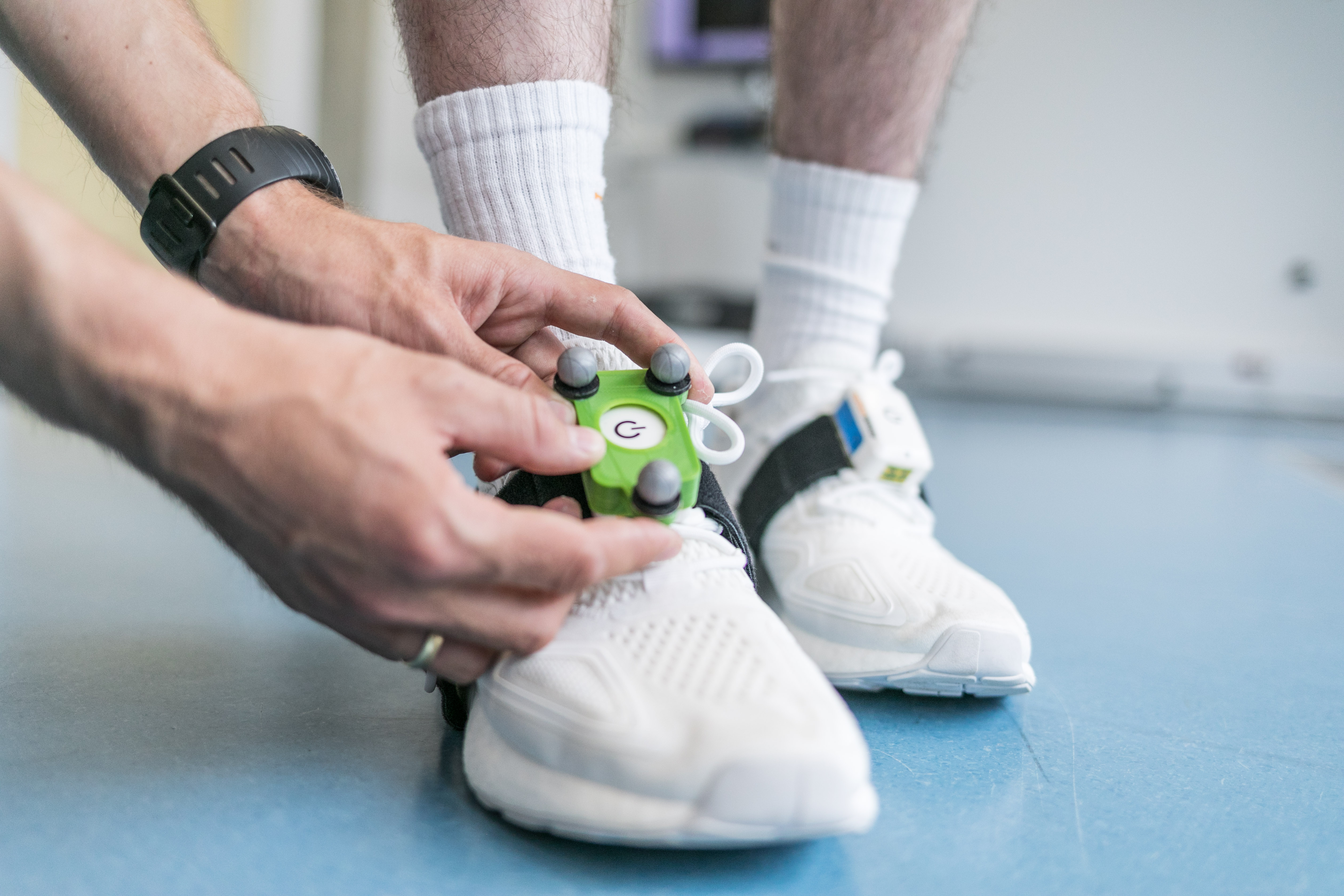The Therapy Innovation Lab focuses on the following areas:
- Motion analysis: Motion analysis is designed to precisely analyse human movement patterns. State-of-the-art equipment is used for carrying out biomechanical analyses and for investigating new technologies.
- Innovative technologies: The expertise and infrastructure provided by the Therapy Innovation Lab enable the development and evaluation of innovative therapies.
- Telerehabilitation: Telerehabilitation practices allow therapy to bridge spatial and temporal divides. Its goal is to support treatment and improve therapeutic outcomes.
- Health literacy: This includes all areas of evidence-based therapy and aims to increase patient health competence and knowledge transfer using digital approaches.





